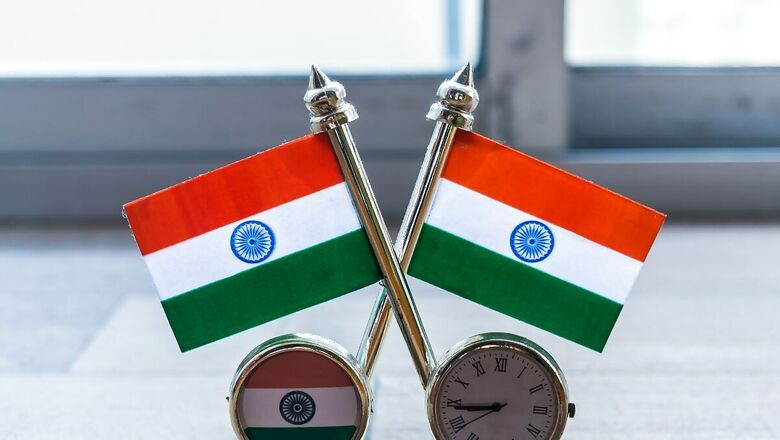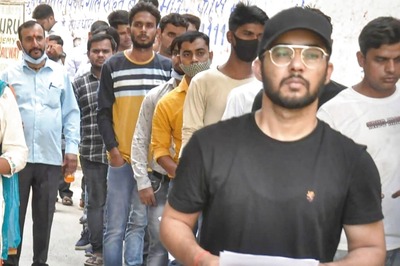
views
Monks, Mysticism and Science
I must admit that my knowledge of the history of science and technology is very limited. Here, the purpose is not to discuss the long list of scientific inventions and discoveries in ancient India; however, I wish to drive home a different point of view. Ancient India’s history is full of monks devoted to spiritual practices making great scientific discoveries.
Nagarjuna, a Buddhist monk, propounded the theory of relativity and was a great alchemist. Aryabhatta, Charak, Dhanvantari, Bhaskaracharya, Varahmihira, Kanad and several other scientific luminaries were ascetics and monks. The six schools of Indian philosophy — Nyaya-Vaisheshika, Sankhya, Vedanta, Jainism, Buddhism and Carvaka — were not propounded by trained metaphysics or professors of philosophy, but by the sages, monks and mystics.
Ashtavakra Gita, a treatise on the nature of reality was given by a mystic, Ashtavakra. The ancient Salvasutras have great hidden treasures of trigonometry and Maths. Allegedly, even the discovery of zero or shunya is traced to the meditative state of Samadhi where sages experience the state of shunya. Buddhism has a complete school on Shunyavaad.
In the East, mysticism and science were not seen in a compartmentalised manner, and opposed to each other. The knowledge was seen as complete and unitary. Unlike in the West, where reason, empiricism and a very basic level of intuition constituted the key pillars of the theory of knowledge; the East recognised the limitations of the ordinary/natural sensory perceptions. The seers in India believed that to comprehend reality as a whole, wisdom, insights and visions revealed in the deep states of meditation are the ultimate sources of knowledge.
Culture and Constructs
Even in today’s India, where these spiritual forces have no official presence in the Constitution, state institutions and structures, their hold and influence on the ground in social matters are paramount. These saints attract lacs of devotees. Even the most corrupt, hubristic, and indolent government officials become hard, honest and efficient in the ashrams of their Gurus.
One can easily get away with mocking the Constitution or a national-level political leader; however, insulting or harming a monk/ascetic or a divine figure can lead to riots and killings. People’s sense of identity predates India which underwent the transfer of power in 1947. Their loyalties towards ancient spiritual and religious structures, monastic institutions (akhadas) and individuals are much more profound and stronger. It’s embedded deep in their subconscious mind. Imagine a country where shraddha, which is mentioned in the Ramayana and Mahabharata, continues to be one of the most important religious practices till today, even after 7,000 to 8,000 years. In other civilisations, they made a 180-degree change by adopting Christianity and Islam but in India, history is alive.
The most unfortunate part is that the current system of governance, civil service, security, police and intelligence, education, economy and welfare, and politics is totally bereft of India’s spiritual roots and legacy. This is a distorted and moth-eaten leftover of what the British created for the needs of their colonial empire. Motivated by the Western theories of separation of Church and State, which was purely a product of the Western medieval history of the Church-State conflict, the UK-trained lawyer-politicians of the Indian freedom movement who drafted the Constitution, instead extracted 85 per cent of it from the Government of India Act 1935 and rest from various Western nations, and nurtured an unreasonable bias and in many cases abhorrence towards India’s Sanatana traditions and institutions.
The anglicised civil service which we inherited from the British had no moorings in Sanatana roots. The hatred was to such an extent that the first Prime Minister of India, Jawaharlal Nehru, completely distanced himself from the reconstruction of Somnath temple, the symbol of India’s spiritual legacy, which was looted by Mahmood Gaznavi in 1025 AD. As a result, the Sanatana legacy in law, statecraft, economy, sciences and philosophy, along with the world’s oldest language of Sanskrit were rejected and dumped as superstitions and dogma. Over time, the intellectual and academic exercise in universities and think tanks was to portray them as anti-science, fanatic and anachronistic, and whitewash the minds of the future generations with an absolute hatred against them.
However, the intellectual and policy elites do not realise that the root causes of India’s present-day major ills and roadblocks in governance, security, economy, diplomacy and education are ones that predate the arrival of the Mughals and the British. In fact, the corruptions and disruptions in our indigenous strategic culture and thought, religion and philosophy, and governance practices paved the way for the arrival of the foreign Islamic and later European invaders and facilitated their plundering. Hence, if we find solutions in the practices, beliefs, theories and policies crafted and created in the Western world and loaded with colonial baggage, then we will never find solutions to our problems.
For example, our attempts to address caste-related discrimination and grievances with divisive quota regimes — once again a product of colonial legacy — has ended up aggravating the caste fault lines and animosity. Likewise, we have completely ignored our Sanatana scriptures and theories in finding answers to our security, intelligence and diplomacy-related challenges.
Not only this, we have become overly obsessed with foreign ideological constructs like Marxism, democracy, human rights, secularism, feminism etc. and we continue to superimpose them on the Indian landscape, a wounded civilisation that predates development and evolution in Europe by a huge gap. Previously, the sages guided the kings and ministers on governance, security and state-related matters. In education and justice, they had the final say. We have thrown those traditions and practices into the trash, a civilisational legacy of thousands of years, worthy of paramount respect.
Conclusion
Despite the outward sheen and shine of the big-ticket G20 celebrations and loud brandishing of the government’s achievements in economy and national security, it is clearly evident that our systems have failed, be it bureaucracy, academia or the security set-up. With all the tedious and rote-learning academic systems, we have produced third-rate academics and average bureaucrats whose skills, ethics, integrity and knowledge pale into insignificance as compared to their Western counterparts. Our political class comes out as the biggest enemy of our civilisation and country with their no commitment to our Sanatana ideals, philosophy and practices.
India’s biggest challenge, instead of an existential threat today, is radical Islam and its fast-spreading tentacles, leaving aside the threats and challenges from foreign powers. And, with over five years of experience in security and public policy, I can confidently state that the current brass of bureaucracy, judiciary, academia, politicians and the security czars hardly seem to have even a bare minimum understanding of the above-mentioned challenges, leave aside giving effective policy solutions.
So, what happens next? Something has to happen because things are collapsing fast. The institutions are crumbling, having outlived their utility. If the current state of affairs continues, maybe the Sanatana civilisation and the current secular-democratic India will cease to exist, giving way to a Sharia-dominated system and this change can happen even faster than one expects. One look at the pernicious spread of radicalisation, the spread of communal violence, and dysfunctional state institutions is enough to make a perceptive mind realise the gravity of the situation.
However, if one goes by India’s history, it can be reasonably argued that Sanatana civilisation is eternal and continues to survive, saved time and again, by spiritual forces through revolutionary interventions and struggles. One revolution came in 2014, which completely uprooted the older socio-political setup and culture that dominated India for seven decades. Perhaps, another revolution is in the offing and once again, the spiritual forces will be the key drivers, controllers and leaders of that phenomenon.
Last but not least, it is pertinent to mention that even the spiritual-religious ecosystem of Bharat has gone through trials and tribulations, in the face of incessant invasions of Abrahamic faiths, foreign invaders, temple destructions, forced conversions and anti-Sanatana state policies after India’s independence. Over the last millennia, they have lived and survived in crises and fear. Such pressures led to several distortions, corruptions, infightings, decline in inner strength, chivalry and purity and the religious leaders and institutions becoming weak, under-confident and vulnerable to politically and financially powerful entities. Their marginalisation and suppression have also brought in the greed and lust for power and proximity to politically influential people.
Hence, the Sanatana religious ecosystem itself is also in need of transformation and rejuvenation. However, the silver lining is that even in the midst of severe crises and pressures, the Sanatana never faded into extinction and was always protected, revived and re-energised by enlightened spiritual masters like Gyandev, Ramanand, Tulsidas, Osho Rajneesh, Shri Lahiri Mahashay, Yukteshwar Giri, Tailang Swami, Paramhansa Yogananda, Ramakrishna Paramhansa, Maharishi Dayananda Saraswati etc. The mechanism is internally driven; hence it is highly likely that the leadership of upcoming transformation and evolution will be taken by the religious forces, as it has in the past.
The author is a Cornell University graduate in public affairs, bachelors from St Stephen’s College, Delhi and has done his PhD on Jaish-e-Mohammad. He is a policy analyst specialising in counterterrorism, Indian foreign policy and Afghanistan-Pakistan geopolitics. The views expressed in this article are those of the author and do not represent the stand of this publication.


















Comments
0 comment